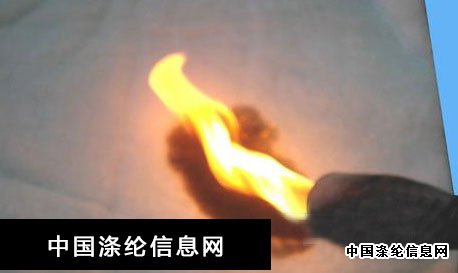Polyester flame retardant fabric intumescent flame retardant with phosphorus and nitrogen as the main elements, the surface can form a uniform carbon foam layer when heated, heat insulation, oxygen barrier, smoke suppression, and can avoid the phenomenon of droplets, with good Flame retardant properties. Studies have shown that polyester fibers treated with intumescent flame retardants have good flame retardant and anti-dropping effects. Although intumescent flame retardants have been extensively studied in plastics, rubbers, and synthetic polymers, there is less flame retardant finishing on polyester. 
Flame-retardant finishing process of polyester flame retardant fabric
Polyester flame-retardant fabrics mainly achieve flame retardant effect by flame retardant modification or surface treatment modification of raw silk. As one of the surface treatment modification methods, the flame retardant finishing of fabric has the advantages of simple process and low cost. Among them, the phosphorus-containing flame retardant is low in toxicity and high in efficiency, and is widely used in polyester. Phosphorus-based flame retardants mainly play a flame retardant role in the coagulation phase by promoting carbonization of the polymer.
The traditional intumescent flame retardant system consists of an acid source, a carbon source and a gas source. The acid source first releases a dehydrating inorganic acid such as phosphoric acid or pyrophosphoric acid, and esterifies with the polyhydric alcohol, and the whole system melts in the process; the gas source generates non-combustible gas and water vapor, and the already molten system is foamed and expanded. The charcoal source is further dehydrated and charred under the action of a dehydrating agent to form a metaphysical substance and a coke residue, so that the entire system is melted and expanded to form a foamed carbon layer.
Polyester flame retardant fabric has high strength, excellent heat resistance and chemical stability. It is widely used in home textiles and various interior fabrics, but it is easy to melt and has a large fire hazard. Therefore, it is very important to study the flame retardant technology of polyester textiles and develop flame retardant polyester textiles.
In this test, a phosphorus-containing flame retardant and a nitrogen-containing flame retardant capable of generating a non-combustible gas are used to form an expansion system, and a suitable post-treatment process is used to obtain a polyester fabric having good flame retardancy, and the treated fabric is kept in good hand. The reduction in fracture strength is small.

Flame-retardant finishing process of polyester flame retardant fabric
Polyester flame-retardant fabrics mainly achieve flame retardant effect by flame retardant modification or surface treatment modification of raw silk. As one of the surface treatment modification methods, the flame retardant finishing of fabric has the advantages of simple process and low cost. Among them, the phosphorus-containing flame retardant is low in toxicity and high in efficiency, and is widely used in polyester. Phosphorus-based flame retardants mainly play a flame retardant role in the coagulation phase by promoting carbonization of the polymer.
The traditional intumescent flame retardant system consists of an acid source, a carbon source and a gas source. The acid source first releases a dehydrating inorganic acid such as phosphoric acid or pyrophosphoric acid, and esterifies with the polyhydric alcohol, and the whole system melts in the process; the gas source generates non-combustible gas and water vapor, and the already molten system is foamed and expanded. The charcoal source is further dehydrated and charred under the action of a dehydrating agent to form a metaphysical substance and a coke residue, so that the entire system is melted and expanded to form a foamed carbon layer.
Polyester flame retardant fabric has high strength, excellent heat resistance and chemical stability. It is widely used in home textiles and various interior fabrics, but it is easy to melt and has a large fire hazard. Therefore, it is very important to study the flame retardant technology of polyester textiles and develop flame retardant polyester textiles.
In this test, a phosphorus-containing flame retardant and a nitrogen-containing flame retardant capable of generating a non-combustible gas are used to form an expansion system, and a suitable post-treatment process is used to obtain a polyester fabric having good flame retardancy, and the treated fabric is kept in good hand. The reduction in fracture strength is small.
Please indicate the source.
Elegant Shape Shallow Bowl,Reusable Glass Steamer,Heat Resistant Jade Plate,Strong Anti-Bacterial Gift Bowl
shaoxing qinzi business company ltd , https://www.qinzisx.com